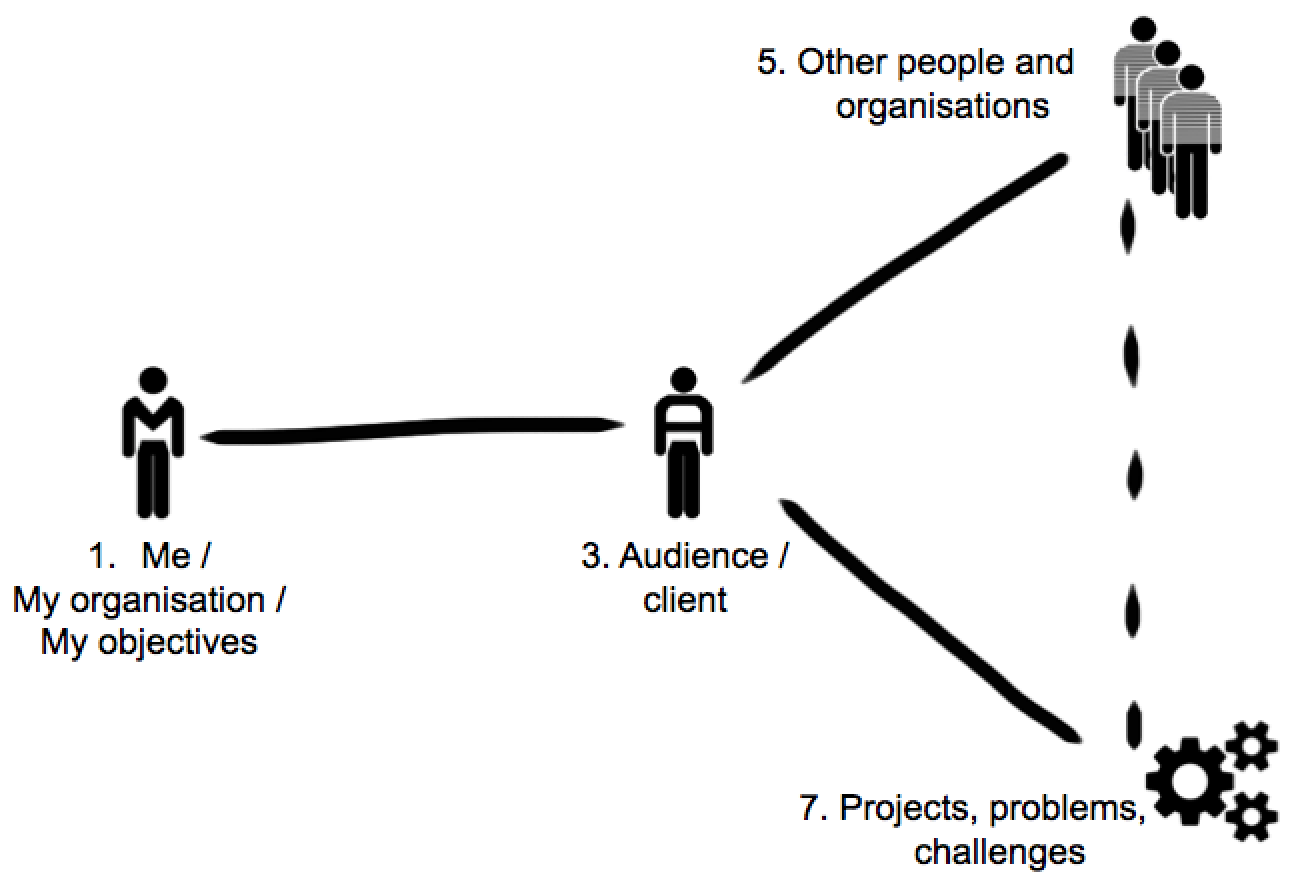The DISCOVER-Y tool explained

Pronounced ‘discover why’, this tool helps me to:
- Identify Discovery targets before an encounter
- Identify new areas for exploration while in conversation
- Move the conversation on when it gets stuck on a topic
- Work with my client to visualise a situation
- After a Discovery meeting, present information to colleagues
DISCOVER-Y is a ‘Y’ on its side. I am at the left-hand end of the Y, and my client is at the centre. Above and to the right of my client are the people and organisations that they are linked to (the ‘who’ of the situation). Below and to the right of my client are their problems, projects, technical ideas and challenges (the ‘what’). That makes four nodes, and the lines joining them represent the relationships between my client and the other nodes. Of course, since this is a Mind Map, we are free to draw other inter-nodal relationships, and to add nodes.
So far, I have just described the nodes, and these are denoted by odd numbers – the odd zones. The links between nodes are at least as important. These even zones capture the relationships between the objects in the odd zones. For example, what I know about my client belongs to zone 3, whereas what I know about my client’s relationship with my competitors belongs to zone 4.
Chapter 12 explains the use of a systemic approach for understanding complex organisations and situations, and this requires a good understanding of the relationships between the different parts of the system. In the DISCOVER-Y tool, this information is in the even zones, and the tool can be used to support a systemic approach.
As an example of the importance of these even zones, notice that, since I feature on the DISCOVER-Y diagram in zone 1, my relationship with my client is represented by zone 2. The information associated with this zone, which I will try to discover, includes the expectations that the client has of me and my organisation, and also his perception of our past performance.
For example, if one of the items in zone 5 is my client’s IT department, then zone 4 information could include my client’s concerns about the IT department, their assessment of the IT department (their perceptions of its size, power, competence, etc) and their expectations of the IT department.
DISCOVER-Y was inspired by the ‘Eight Intervention Zones’ tool of Vincent Lenhardt, which can be found in his book Coaching for Meaning.
More about DISCOVER-Y and Discovery:
- DISCOVER-Y top
- The DISCOVER-Y tool explained
- DISCOVER-Y for encounter prepration (with MAP)
- DISCOVER-Y in real time (i.e. during an encounter)
- DISCOVER-Y as an aide to debrief
- The importance of Discovery
- Learning Discovery and its challenges
- Discovery helps to optimise delivery
- Discovery guarantees attention
- Effective listening (with checklist and blacklist)
- Playback
- DISCOVER-Y in brief
Examples:
Get the Client Encounters of the Technical Kind book!
